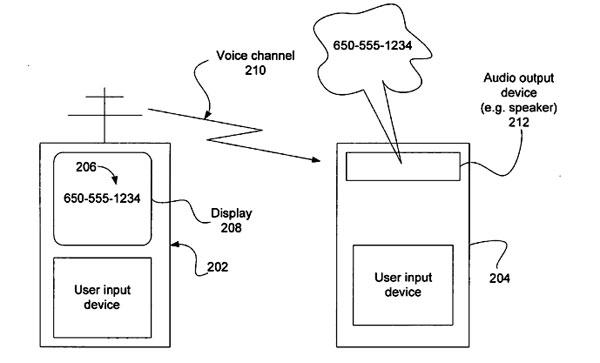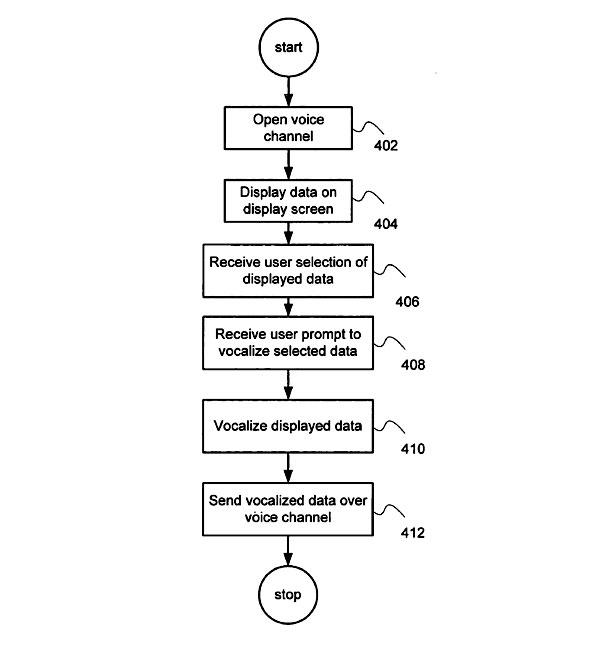Apple may let iPhones share data over voice channels
Apple Inc. has done some conceptual work on software technology that would allow an iPhone to vocalized multimedia data — such as text — and then send that vocalized data via a walkie-talkie-like voice channel to a second iPhone where it would then be output as audio or transcribed back into text.
Given the rapid deployment, proliferation, and technical advancement of mobile personal communication devices like cell phones, users of those devices are presented with any number of ways to communicate with other users, Fadell explained in the filing.
"For example, a user can send type a text message using, for example, Short Message Service-Point to Point (SMS-PP) protocol as defined in GSM recommendation 03.40 where messages are sent via a store-and forward mechanism to a Short Message Service Center (SMSC), which will attempt to send the message to the recipient and possibly retry if the user is not reachable at a given moment," he wrote. "Therefore, SMS-PP requires the use of a backend server to provide the necessary support for transmission of data between sender and receiver."
On the other hand, Fadell's concept calls for a mechanism whereby data is passed between a sender and receiver unit by way of voice channel only, therefore bypassing use of the data channel used in conventional arrangements.
"In this way, a sender can select that data which he/she desires to send to a receiver unit using by first converting the data into an appropriate vocal/voice format which is then forwarded to a receiver unit by way of the voice channel," he wrote. "Once received at the receiver unit, the vocalized data can be converted to an audio signal, which is then output by way of an audio output device (such as a speaker, earphone, etc.)."
Fadell explains that the concept is particularly well suited for people having visual problems or in those situations where viewing the data on a small display screen is problematic.
According to the filing, once the vocalized data — such as a vocalized phone number — has been sent to and received at the second cell phone, processing of that data can be performed based upon a prompted user request or based upon a pre-selected protocol.
"For example," Fadell wrote, "once received at the cell phone, the vocalized phone number can be passed to an audio output device that (in the case of a speaker) generates an audible rendition of the vocalized phone number. In another case, the vocalized phone number is forwarded to a voice mail server where the receiver records the vocalized phone number as a voice mail message for subsequent playback."
In the filing, the Apple iPod chief also describes a method where vocalized text data could be received and then transformed back into text, effectively allowing for walkie-talkie like text messaging between iPhones without the need for a backend server.
 AppleInsider Staff
AppleInsider Staff












 Andrew Orr
Andrew Orr
 Sponsored Content
Sponsored Content
 Malcolm Owen
Malcolm Owen

 William Gallagher
William Gallagher

 Mike Wuerthele
Mike Wuerthele
 Christine McKee
Christine McKee







